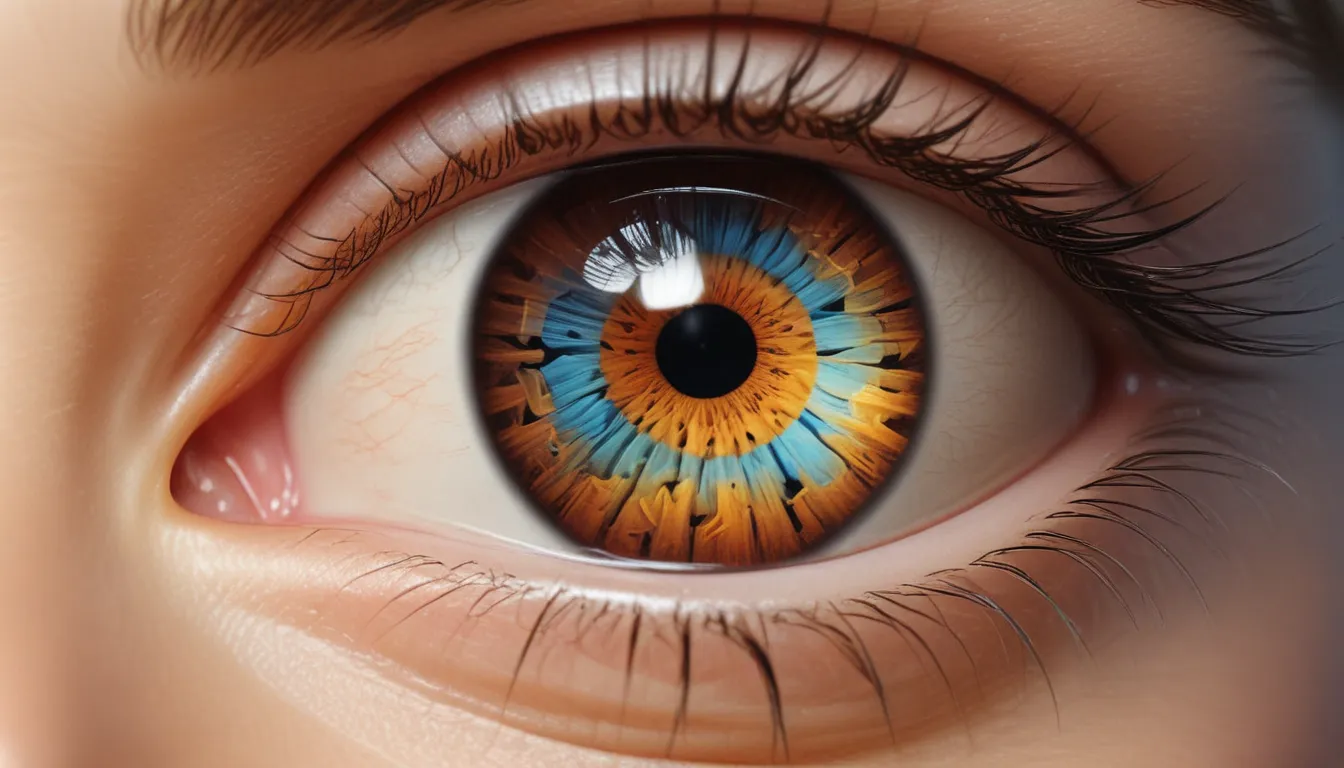A Note About Images: The images used in our articles are for illustration purposes only and may not exactly match the content. They are meant to engage readers, but the text should be relied upon for accurate information.
Are you ready to embark on a journey into the intriguing world of birefringence? This captivating phenomenon in optics has mesmerized scientists and researchers for centuries. Birefringence, also known as double refraction, is a unique property found in certain materials that causes light to split into two separate beams, each with a different refractive index.
In this article, we will delve into nine unbelievable facts about birefringence that will showcase the remarkable wonders of science. From its discovery to its applications across various industries, we will uncover the fascinating aspects of this optical phenomenon. So, fasten your seatbelts and get ready to be amazed by the extraordinary facts about birefringence!
Unveiling the Mysteries of Birefringence
- Birefringence is the intriguing property that allows light to split into two beams within specific materials, such as crystals and liquid crystals. It plays a vital role in the creation of polarizing filters and the study of biological tissues, showcasing its diverse applications in different fields.
Understanding Birefringence: A Closer Look
Birefringence, also known as double refraction, is an optical phenomenon observed in materials that exhibit two different refractive indices for light polarizations. When light passes through a birefringent material, it splits into two beams, each traveling at different speeds and directions. This unique property results in the formation of colorful patterns and aids scientists in studying minerals and biological tissues.
The Role of Crystal Structure in Birefringence
Birefringence is caused by the anisotropic crystal structure of certain materials. Anisotropic materials have varied physical properties in different crystallographic directions. In the case of birefringence, the crystal structure of the material contains a preferred axis along which light waves can propagate at different velocities, leading to the splitting of incident light waves.
Diverse Applications of Birefringence
Birefringence can be observed in a wide range of natural and synthetic materials. Crystals like calcite, quartz, and tourmaline are renowned for their birefringent properties. Additionally, synthetic materials such as polarizing films and liquid crystals also exhibit birefringence, opening up new avenues for applications in various industries.
Practical Uses of Birefringence
- Birefringence is instrumental in the production of polarizing filters, which find extensive use in photography, sunglasses, and LCD screens. These filters, made from materials with birefringent properties, help eliminate glare and enhance image quality by selectively blocking specific polarizations of light.
Birefringence in Optical Mineralogy
Geologists and mineralogists utilize birefringence to identify and analyze minerals under a polarizing microscope. By studying how light interacts with mineral samples, they can determine the crystal structure and composition of minerals, facilitating detailed geological studies.
Stress Analysis with Birefringence
Birefringence can also be harnessed to measure stress in materials. By subjecting a birefringent material to stress, the difference in refractive indices between stressed and unstressed states can be quantified. This property is leveraged in stress analysis techniques like photoelasticity, enabling engineers to study material behavior under different conditions.
Spectacular Interference Patterns
- When two light beams with distinct polarization states are recombined after passing through a birefringent material, they create colorful interference patterns known as interference fringes. This visually stunning phenomenon highlights the intricate interactions of light within birefringent materials.
Illuminating Liquid Crystal Displays
Liquid crystal displays (LCDs) rely on the birefringent properties of liquid crystals to control light polarization and generate images. The alignment of liquid crystal molecules dictates the polarization state of transmitted light, enabling the creation of vibrant and detailed images in modern display technologies.
Probing Biological Tissues with Birefringence
In biomedical research, birefringence plays a crucial role in studying the structure and properties of biological tissues. Polarized light microscopy, which exploits birefringence, allows scientists to gain valuable insights into tissue composition and organization by analyzing how polarized light interacts with biological samples.
Embracing the Enigma of Birefringence
In conclusion, birefringence stands as a captivating optical phenomenon that manifests in select materials, showcasing two distinct refractive indices. This unique property finds widespread applications across diverse fields such as telecommunications, mineralogy, and material sciences. From its historical discovery by French physicist Etienne-Louis Malus to its modern-day utilization in cutting-edge technologies, birefringence continues to captivate and inspire scientists and engineers worldwide.
FAQ: Unveiling the Mysteries of Birefringence
Q: What is birefringence?
A: Birefringence, also known as double refraction, is an optical property exhibited by certain materials that causes incident light to split into two beams with different refractive indices.
Q: How does birefringence occur?
A: Birefringence arises when light passes through materials with anisotropic properties, where physical characteristics vary based on measurement direction. The uneven molecular arrangement in these materials leads to the splitting of light into orthogonal polarizations.
Q: What are common examples of birefringent materials?
A: Common birefringent materials include calcite, quartz, ice, and specific types of plastics. These materials are prevalent in polarizing filters, wave plates, and other optical devices.
Q: What are the applications of birefringence?
A: Birefringence finds applications in various fields, including telecommunication for polarization mode dispersion compensation, geology for mineral identification, material science for stress analysis, and the production of 3D movies.
Q: Is birefringence observable in everyday life?
A: Yes, birefringence can be witnessed in daily experiences, such as the color and brightness changes observed in LCD screens from different viewing angles due to birefringent properties in liquid crystal materials.
Q: Is birefringence a common phenomenon?
A: Birefringence is more prevalent in materials with anisotropic properties and is not a common occurrence in all materials. These materials typically consist of crystals or aligned molecular structures that exhibit birefringent characteristics.
Dive deeper into the enthralling realm of crystallography and explore the intricate structures and symmetries awaiting your discovery. Unearth more optical properties that shape our perception of light and color, and delve into the mysteries of the universe through cosmic microwave background anisotropy, unraveling the secrets of our cosmos’s origins.
Illuminating Minds with Birefringence
Our commitment to delivering engaging and trustworthy content lies at the core of our mission. Each fact shared on our platform is contributed by real users like you, bringing a wealth of diverse insights and information to our community. With dedicated editors ensuring the highest standards of accuracy and reliability in our content, you can trust in our commitment to quality and authenticity as you journey through the realms of science and discovery. Join us in exploring the wonders of birefringence and beyond!






